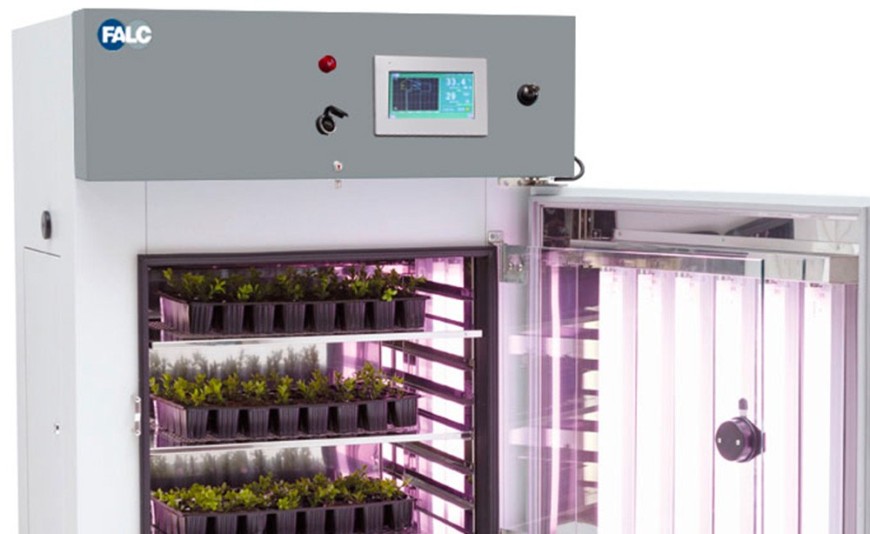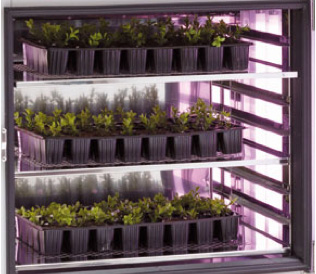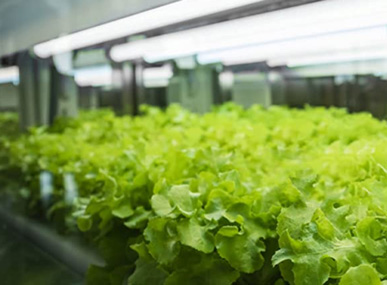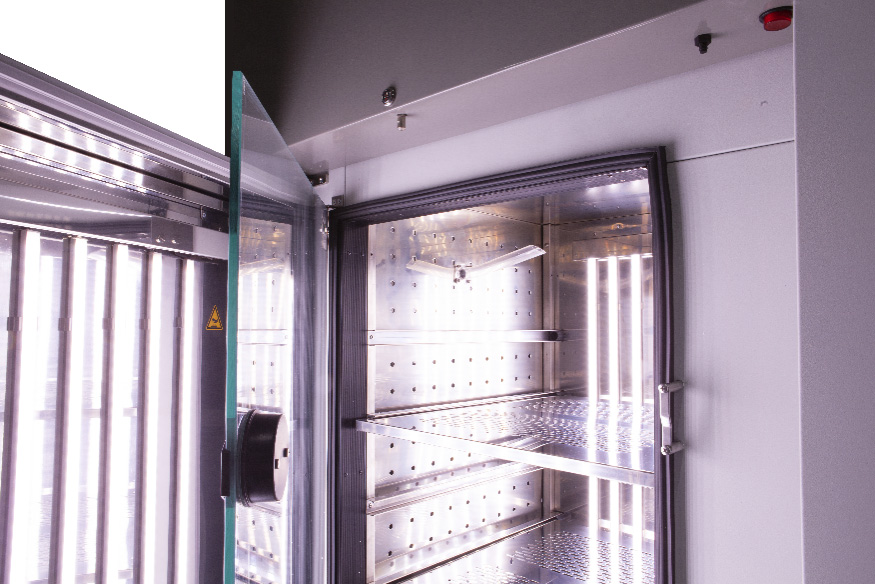Between science and nature: growth chambers for advanced analysis of plant and microorganism growth
- 13 Feb, 2024
- News

In recent decades, in the fields of agriculture, plant biology, and microbiology scientific research has made significant strides thanks to the introduction of advanced technologies. Among these, growth chambers play a crucial role in the precise and controlled study of plant and microorganism growth. These chambers, often referred to as "phytotrons" or "microbiotrons," provide a highly controlled environment that allows scientists to manipulate various parameters to better understand the biological processes involved in growth and development.
Key features of growth chambers Growth chambers are structures that allow a precise regulation of various environmental factors, such as temperature, humidity, light, and atmospheric composition. These parameters can be modulated to simulate specific conditions, enabling researchers to investigate the effects of different variables on plants and microorganisms.
Growth chambers are structures that allow a precise regulation of various environmental factors, such as temperature, humidity, light, and atmospheric composition. These parameters can be modulated to simulate specific conditions, enabling researchers to investigate the effects of different variables on plants and microorganisms.
First, temperature control in growth chambers allows specific values to be established to emulate particular climatic conditions or to examine the response of plants and microorganisms to thermal fluctuations.
The lighting regulation, the second key point, plays a crucial role, since light is fundamental for photosynthesis in plants. Growth chambers offer detailed control over the amount, intensity, and duration of light, allowing scientists to simulate natural lighting cycles and study plant reactions under different light conditions.
Moisture management, the third relevant aspect, is essential for examining the growth of plants and microorganisms under conditions that mimic their natural habitat. Growth chambers become a valuable instrument for reproducing specific humidity conditions. Finally, the ability to control the atmosphere's composition inside the growth chambers is fundamental for studying the effects of various atmospheric gases on plants and microorganisms. This manipulation capability allows the exploration of complex interactions between living organisms and the chemical composition of the surrounding air.
Finally, the ability to control the atmosphere's composition inside the growth chambers is fundamental for studying the effects of various atmospheric gases on plants and microorganisms. This manipulation capability allows the exploration of complex interactions between living organisms and the chemical composition of the surrounding air.
Some applications of growth chambers
Growth chambers are widely used in various scientific fields and practical applications. The most frequent ones include:
Agriculture: Studies on crop varieties, testing of new cultivation methods, and evaluations of disease resistance.
Plant Biology: Analysis of photosynthesis processes, root development studies, exploration of plant responses to environmental stress.
Microbiology: Research on the growth and dynamics of microorganisms, development of new antibiotics, and understanding the effects of climate change on soil microbiota.
Environmental Research: Assessment of the impacts of air pollutants on vegetation, studying plant adaptation to climate change.
FALC's experience and expertise in growth chamber configuration Each growth chamber can be configured in a completely different way based on the application required by the operator. Just like climate and stability chambers, growth chambers must be designed based on their intended use and are considered their more elaborate version due to the high number of parameters to customize.
Each growth chamber can be configured in a completely different way based on the application required by the operator. Just like climate and stability chambers, growth chambers must be designed based on their intended use and are considered their more elaborate version due to the high number of parameters to customize.
Two new factors come into play: the light spectrum and the amount of CO2, which are crucial for studying sample growth. These machines, aiming to reproduce the natural habitat of plants or microorganisms, need to recreate the alternation of day and night with a lighting that can be arranged on the sides, on the door, or on each shelf. It all depends on the type of sample and the type of test to be performed.
Starting from the configuration of a standard chamber, it is possible to adapt the lighting according to the user's application, acting on the type of lights, the intensity and the light spectrum. A particularly interesting option is the customized monitoring of lights with real-time value display. This involves managing both the general light intensity inside the machine and each individual shelf, even if composed of different lights.
Just like in climate and stability chambers, FALC pays great attention to the structural part and control electronics. In the first case, the quality of stainless steel provides high robustness, and the horizontal air circulation system ensures excellent temperature uniformity at every point on each shelf at any level. The internal glass door with a tight seal allows monitoring the chamber's interior without temperature loss, and the heating of the main door's interior creates an anti-condensation effect for sample monitoring without necessarily opening it.
Another decisive structural aspect is the quality of the ultrasonic system for humidity production, which is efficient even with low energy consumption. Regarding control electronics, for this line of chambers, FALC chooses top-of-the-line probes and a PLC system that ensures a very accurate PID control even at low relative humidity percentages. The USB port and, especially, the Ethernet port are essential for long-term tests in which the operator's direct presence is not necessary.
Therefore, we can say that starting from the same technology and implementing some elements into the structure, high-quality growth chambers are obtained, guaranteed for reliable scientific results.
FALC's contribution to sustainability
The same care and meticulousness that FALC applies to climate and stability chambers are also adopted in the production of growth chambers through the choice of cutting-edge components to reduce consumption and waste. As manufacturers, we not only focus on the proper functioning of the instrument but also strive to propose solutions as comprehensive as possible, addressing related aspects to meet the diverse needs of a market that nowadays places environmental impact and sustainability as a central theme in any field of work.
